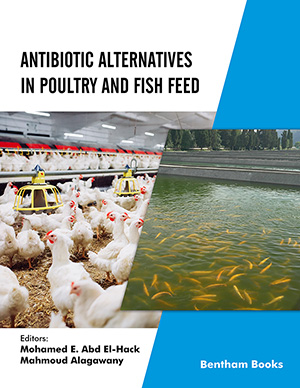Abstract
Background: The present investigation aimed to evaluate the role of Plant Growth- Promoting Rhizobacteria (PGPR) and Ag-nanoparticles on two varieties (American variety, Poinsett 76 and Desi variety, Sialkot selection) of cucumber plants.
Methods: Cucumber seeds prior to sowing, were inoculated with two strains of PGPR, Pseudomonas putida (KX574857) and Pseudomonas stutzeri (KX574858) at the rate of 106 cells/ml. Agnanoparticles (5ppm) were sprayed on the plant at early vegetative phase 27 d after sowing.
Results: The proline, sugar, protein, phenolics, flavonoids, chlorophyll and carotenoids contents of leaves of plants and the activities of Phenylalanine Ammonia-Lyase (PAL), Superoxide Dismutase (SOD) and Catalase (CAT) were determined from leaves of plants at early vegetative phase. After 3 months of seeds sowing, Ag-nanoparticles enhanced the length of root but decreased the length of shoot and fresh weight of root and shoot as compared to control whereas, the leaf protein, proline, phenolics, flavonoids, chlorophyll b, total chlorophyll, sugar and Phenylalanine Ammonia-Lyase (PAL) activity of plants were increased significantly over control. Ag-nanoparticles also suppressed the effect of PGPR for root, shoot length but augmented the protein and phenolics contents of leaves of both the varieties.
Conclusion: The combined treatment of Ag-nanoparticles and PGPR enhanced flavonoids content of leaves and the activities of PAL, SOD and CAT in leaves of plants over control. Agnanoparticles effectively increased the Phenylalanine Ammonia-Lyase (PAL), Catalase (CAT) and superoxide dismutase (SOD) activities in leaves of both the varieties. Pseudomonas putida may be used either alone or in combination with Ag-nanoparticles to enhance the antioxidant and defense enzyme activities. Hence, the plant can tolerate the diseases and stresses in a much better way with higher protein and phenolics content.
Keywords: Ag-nanoparticles, PGPR, cucumber, antioxidant enzymes, PAL, carotenoids.
[http://dx.doi.org/10.1002/jobm.201800309]
[http://dx.doi.org/10.1016/j.toxlet.2007.10.004] [PMID: 18022772]
[http://dx.doi.org/10.1038/s41598-019-38702-8]
[http://dx.doi.org/10.1016/j.ecoenv.2014.03.022] [PMID: 24726943]
[http://dx.doi.org/10.1080/17429145.2018.1471527]
[http://dx.doi.org/10.1016/j.jscs.2013.09.011]
[http://dx.doi.org/10.1007/978-3-642-37241-4_2]
[http://dx.doi.org/10.1093/jexbot/53.372.1331] [PMID: 11997379]
[http://dx.doi.org/10.1371/journal.pone.0213040]
[http://dx.doi.org/10.1139/w99-137] [PMID: 10749536]
[http://dx.doi.org/10.1007/s11274-011-0979-9] [PMID: 22805914]
[http://dx.doi.org/10.1006/pmpp.1999.0243]
[http://dx.doi.org/10.1002/tbmb.718540875] [PMID: 12749689]
[http://dx.doi.org/10.3389/fmicb.2018.02507]
[http://dx.doi.org/10.1021/ac60111a017]
[http://dx.doi.org/10.1007/BF00018060]
[http://dx.doi.org/10.1016/S0308-8146(98)00102-2]
[http://dx.doi.org/10.1016/0003-2697(71)90370-8] [PMID: 4943714]
[http://dx.doi.org/10.1016/S1369-5266(00)00163-1] [PMID: 11312131]
[http://dx.doi.org/10.2527/jas1966.253617x] [PMID: 5338818]
[http://dx.doi.org/10.1016/j.procbio.2012.01.006]
[http://dx.doi.org/10.4489/MYCO.2011.39.1.026] [PMID: 22783069]
[http://dx.doi.org/10.1116/1.4995605]
[http://dx.doi.org/10.1139/O07-018] [PMID: 17612622]
[http://dx.doi.org/10.1080/15226514.2015.1064352]
[http://dx.doi.org/10.1111/pce.13195]
[http://dx.doi.org/10.1093/jxb/erh010] [PMID: 14623902]
[http://dx.doi.org/10.1007/s00344-009-9079-6]
[http://dx.doi.org/10.1104/pp.104.900255]
[http://dx.doi.org/10.1016/j.fitote.2012.10.003] [PMID: 23098877]
[http://dx.doi.org/10.1080/15226514.2015.1064352]
[http://dx.doi.org/10.1080/09583157.2012.694413]
[http://dx.doi.org/10.1007/s12010-012-9759-8] [PMID: 22692847]
[http://dx.doi.org/10.4038/jnsfsr.v42i4.7729]
[http://dx.doi.org/10.2478/s11756-018-0127-1]
[http://dx.doi.org/10.1023/A:1022374520121]
[http://dx.doi.org/10.3389/fpls.2013.00356] [PMID: 24062756]
[http://dx.doi.org/10.20546/ijcmas.2017.603.220]
[http://dx.doi.org/10.1007/s00203-019-01644-w]
[http://dx.doi.org/10.21475/poj.10.03.17.pne600]
[http://dx.doi.org/10.1080/713610853]
[http://dx.doi.org/10.1080/15226514.2017.1381940]
[http://dx.doi.org/10.1007/s11738-016-2335-z]
 28
28 2
2



















